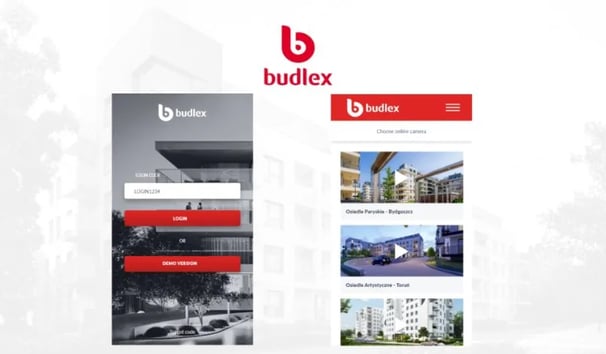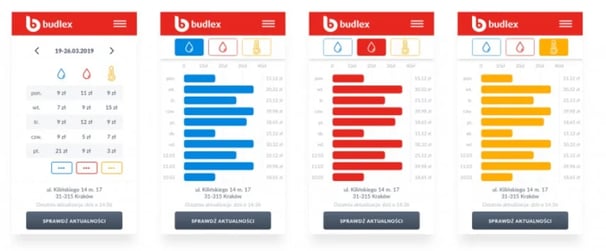Your company is preparing for a major digital overhaul to upgrade legacy systems. Pitch for this modernization process to also integrate green technologies where the firm not only streamlines operations but also cuts energy costs.
For example, by introducing AI-driven energy management systems, your office buildings automatically adjust lighting and HVAC settings based on occupancy, saving millions annually while reducing your carbon footprint.
As businesses worldwide strive to balance growth with sustainability, integrating GreenTech solutions into digital transformation processes offers a unique opportunity to achieve both goals.
This article explores how businesses can effectively integrate GreenTech into their digital transformation strategies, addressing technical and financial challenges while highlighting sector-specific opportunities for sustainable practices.
Intersection of GreenTech and Digital Transformation
The proper integration of green technologies into a digital transformation exercise can pave the way for sustainable and efficient business operations. Let’s go into some quick definitions and how their synergy can be of value to enterprises.
What is GreenTech?
Green technology, or GreenTech, encompasses a range of innovative technologies designed to mitigate the adverse effects of human activities on the environment. This includes renewable energy sources like solar and wind, energy-efficient systems, and sustainable practices in manufacturing, transportation, and waste management.
GreenTech also covers digital technologies such as mobile apps and software that enhance sustainability efforts by optimizing energy use, tracking carbon footprints, and promoting eco-friendly behaviors.
Digital Transformation 101
Digital transformation refers to the integration of digital technology into all areas of a business, fundamentally changing how it operates and delivers value to customers. This transformation involves adopting technologies such as cloud computing, artificial intelligence (AI), the Internet of Things (IoT), and data analytics.
These technologies are typically intended to streamline operations, upgrade customer experiences, facilitate data-driven decisions, and achieve other objectives vital businesses. Digital transformation is not just about upgrading IT systems but a cultural shift to continuously challenge the status quo, experiment, and adapt to new business models.
Synergy Between GreenTech and Digital Transformation
The integration of GreenTech into digital transformation processes creates a synergy that amplifies the benefits of both. A digital transformation initiative can provide the technological backbone necessary for the effective deployment of GreenTech solutions.
For instance, IoT can optimize energy management by providing real-time data on energy usage, enabling businesses to reduce waste and improve efficiency. AI and machine learning can be used to predict maintenance needs, thereby preventing breakdowns and extending the lifespan of machinery, which contributes to sustainability by reducing the need for replacements and minimizing waste.
Moreover, digital transformation enhances the scalability and impact of GreenTech initiatives. Cloud computing, for example, offers scalable storage and processing power, essential for managing the vast amounts of data generated by GreenTech applications. This enables more sophisticated data analysis and supports the development of more efficient and sustainable business practices.
Identifying GreenTech Opportunities in Digital Transformation
By strategically planning and evaluating existing processes and technologies, companies can uncover integration points that drive both environmental and economic benefits. This section delves into the steps and considerations necessary for aligning GreenTech with digital transformation goals and assessing current operations for potential enhancements.
Strategic Planning for Integration
Integrating GreenTech into digital transformation strategies requires careful strategic planning to align sustainability goals with business objectives. This alignment ensures that both initiatives support and reinforce each other, leading to more significant overall benefits. Here are key steps to strategically plan for the integration of GreenTech within digital transformation processes:
Set Clear Objectives: Establish clear, measurable sustainability goals that align with the broader business objectives. Begin with your digital transformation objectives, and then go into sustainability objectives. These could include reducing carbon emissions, enhancing energy efficiency, or increasing the use of renewable resources.
Conduct a Sustainability Audit: Perform a thorough audit of current operations to identify areas where GreenTech can have the most significant impact. This audit should evaluate energy consumption, waste production, resource usage, and other environmental metrics.
Develop a Roadmap: Create a detailed roadmap outlining the steps required to integrate GreenTech into digital transformation initiatives. Alternatively, this GreenTech roadmap can be integrated within your digital transformation plan. This roadmap should include timelines, resource allocation, and key performance indicators (KPIs) to track progress. Be aware that the roadmap should be flexible enough to adapt to new technologies and evolving business needs.
Engage Stakeholders: Involve key stakeholders, including employees, customers, suppliers, and investors, in the planning process. Their input can provide valuable insights and foster a sense of ownership and commitment to sustainability initiatives.
Leverage Partnerships and Funding: Seek partnerships with technology providers, government agencies, and non-profits to access the latest GreenTech solutions and potential funding sources. Public-private partnerships and innovation grants can provide the necessary financial support and expertise to drive GreenTech integration. If the funding can be drawn from the general corporate budget, all the better.
Evaluating Current Processes and Technologies
Assessing existing business processes and technologies is critical for identifying GreenTech integration points and enhancing operational efficiency. Here’s how businesses can evaluate their current systems:
Map Existing Processes: Document all current business processes to identify where GreenTech can be incorporated. This mapping should cover all aspects of operations, from production and logistics to customer service and waste management.
Identify High-Impact Areas: Focus on processes that have the highest environmental impact or offer the most significant potential for improvement. For example, energy-intensive processes, waste-heavy production methods, and inefficient logistics systems are prime candidates for GreenTech integration. Prioritize these areas to maximize the environmental and economic benefits.
Evaluate Existing Technologies: Review the current technology stack to identify tools and systems that can be enhanced with GreenTech solutions. For instance, integrating IoT sensors in manufacturing can optimize energy use and reduce waste, while AI-driven analytics can improve predictive maintenance and reduce downtime.
Benchmark Against Industry Standards: Compare your current processes and technologies with industry best practices and standards. Benchmarking helps in understanding where your business stands and what improvements can be made to align with leading sustainability practices.
Pilot and Scale: Start with pilot projects to test the feasibility and impact of GreenTech solutions. Use the insights gained from these pilots to refine strategies and scale successful initiatives across the organization. Continuous monitoring and feedback loops are essential to ensure that the integrated solutions deliver the desired outcomes.
Sector-specific Opportunities of Digital GreenTech
As businesses continue to prioritize sustainability, integrating digital GreenTech solutions into their digital transformation processes offers significant opportunities to enhance operational efficiency and reduce environmental impact.
By adopting advanced software and applications, companies across various industries can achieve their sustainability objectives while driving their digital transformation objectives. The following sections highlight specific examples of how digital GreenTech is being applied in key sectors to promote sustainable practices.
Property Management and Real Estate
For real estate—and any business managing their own office premises or properties—digital GreenTech solutions can significantly improve energy management and sustainability.
Smart building management systems integrate IoT sensors and advanced analytics to optimize heating, ventilation, air conditioning (HVAC) systems, lighting, and water consumption across commercial and residential properties.
For instance, Budlex, a Polish real estate developer, worked with GMI Software to install IoT sensors and create a mobile app to allow residents to monitor utility usage in real-time. Despite initial hardware limitations that offered limited data, Budlex's integration of IoT and smart meters have been providing residents with valuable insights into their daily utility consumption.
Agriculture
Digital GreenTech applications such as precision farming and smart irrigation systems are transforming how farmers do their work. Precision farming tools use data analytics and IoT to optimize resource usage, ensuring efficient and minimal use of water, fertilizers, and pesticides.
Smart irrigation systems enable precise water management based on real-time soil and weather data, reducing water waste and improving crop yields. These technologies help farmers adopt more sustainable practices, reducing the environmental impact of agricultural activities.
Ecommerce and Logistics
In retail and ecommerce, AI and machine learning optimize inventory management by predicting demand accurately, reducing waste and overproduction. For instance, platforms like IBM's Environmental Intelligence Suite provide tools to track and manage environmental impact across supply chains, helping businesses minimize their carbon footprints and improve sustainability metrics.
When it comes to logistics and transportation, IoT-enabled route optimization software aids delivery companies in planning the most efficient routes, thus reducing fuel consumption and emissions. Smart fleet management solutions optimize route planning and monitor vehicle performance in real-time.
Manufacturing
The manufacturing sector benefits greatly from digital GreenTech solutions, particularly in managing energy, optimizing production processes, and minimizing waste. Energy management solutions enable manufacturers to track and reduce their energy use, contributing to more sustainable production practices.
Technologies like predictive maintenance not only reduce unexpected downtime but also extend the lifespan of machinery, contributing to sustainability by reducing the need for frequent replacements.
Furthermore, digital platforms can provide detailed insights into material usage and waste production. This enables manufacturers to implement more sustainable practices, such as recycling materials or reducing excess inventory.
Overcoming Challenges in GreenTech Integration
Integrating GreenTech solutions into a digital transformation plan or process presents several technical and financial challenges. Here is an outline of the key issues and potential solutions:
Technical Challenges
System Compatibility: Integrating new GreenTech solutions with existing legacy systems can be complex, requiring significant modifications to ensure seamless interoperability.
Cybersecurity Concerns: Implementing new technologies can introduce vulnerabilities, necessitating robust cybersecurity measures to protect against potential threats.
Specialized Skill Requirements: Advanced GreenTech solutions often require specialized technical skills for management and maintenance, which may necessitate additional training or hiring of skilled personnel.
Financial Cost
Upfront Investment: Implementing advanced technologies such as IoT sensors, AI-driven analytics, and smart energy management systems involves substantial initial costs
Infrastructure Upgrades: Significant upgrades to existing infrastructure may be necessary to support new GreenTech solutions, adding to the initial expenditure.
Ongoing Maintenance: Continuous maintenance and updates to the technology can further increase the overall cost.
Funding Options and Incentives
Government Incentives: Utilize tax credits, grants, and subsidies offered by governments to support the adoption of sustainable technologies.
Public-Private Partnerships: Collaborate with technology providers, industry consortia, and non-profits to share costs and gain access to cutting-edge GreenTech solutions.
Innovation Grants: Apply for grants aimed at fostering innovation in sustainability and technology integration to secure additional funding.
Strategic Solutions
Conduct a Cost-Benefit Analysis: Evaluate the long-term benefits of GreenTech integration against the initial costs to justify the investment and demonstrate potential savings and efficiency gains over time.
Phased Implementation: Implement GreenTech solutions in phases to manage costs more effectively and allow for adjustments based on initial outcomes and feedback.
Leverage Existing Resources: Maximize the use of existing resources and infrastructure to minimize additional costs and ensure a smoother integration process.
Harnessing GreenTech for Sustainable Success
Integrating GreenTech into digital transformation processes is not just a strategic move but a necessity for businesses aiming to thrive in the modern, sustainability-driven marketplace. By addressing technical and financial challenges, leveraging funding opportunities, and adopting advanced digital solutions, companies can achieve significant operational efficiencies and environmental benefits.
This integration not only helps in reducing costs and improving sustainability metrics but also enhances brand reputation and stakeholder confidence. As businesses continue to innovate, the synergy between GreenTech and digital transformation will play a pivotal role in driving long-term growth and resilience. Embracing this approach positions companies at the forefront of sustainable business practices, ready to meet the demands of the future.




